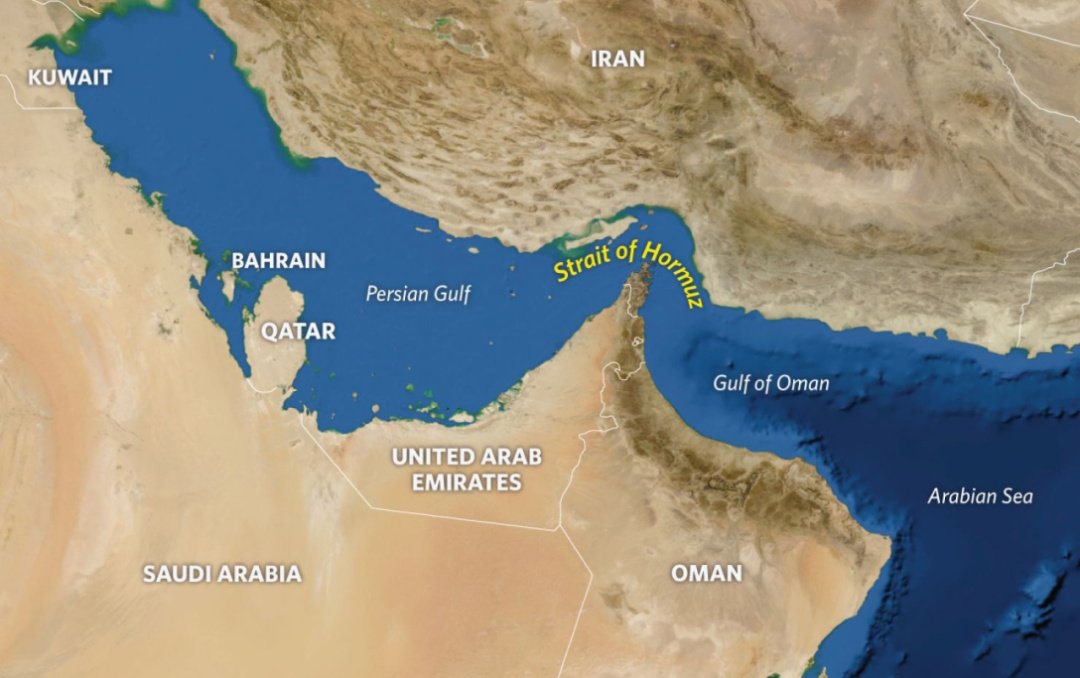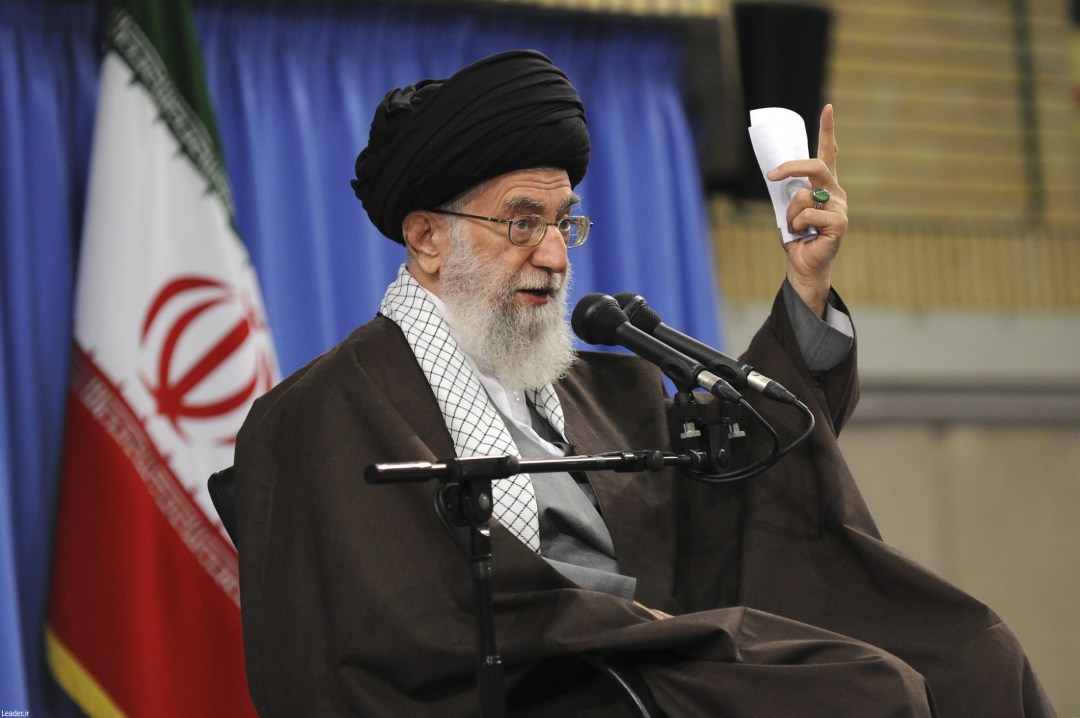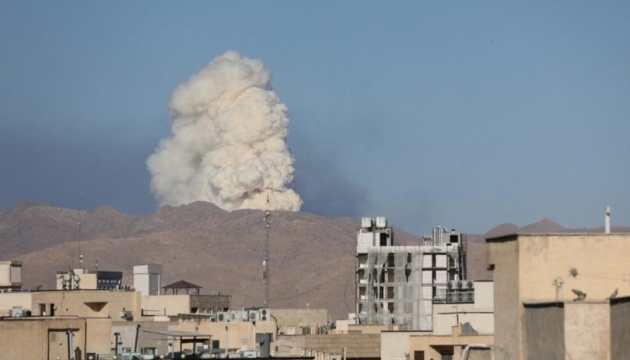Tehran has the capabilities to block Hormuz. But it is unlikely to take the risk, given that this would draw backlash from China and an immediate response from the United States
The consequences of the unprecedented strike by the US Air Force with super-powerful GBU-57 bunker-busting bombs on three Iranian nuclear facilities in Fordow, Natanz and Isfahan were predicted and quick to come. This operation, which undoubtedly brought tensions in the region and in the world to a new level, prompted U.S. President Donald Trump to declare the need for immediate peace on the part of Iran. At the same time, the American leader made it clear: any response from Tehran “will be met with a much stronger response.” In response, Iranian Foreign Minister Abbas Araghchi announced “long-term consequences” and reserved for Tehran “all possible options for defense.” The first “demonstrative response” flew to American bases in Qatar and Iraq. In addition, Iran is again threatening to shut the Strait of Hormuz.
“The current toy missile launches at the locations of American military bases are just a picture for the Iranians, so that no one thinks that the authorities in Tehran are scared. Today, the “nuclear” weapon in the hands of Iran is the closure of the Strait of Hormuz, through which about 20 million barrels of oil, about one-fifth of daily global production, flow every day. If the Iranian leadership dares do so, this will affect everyone without exception, and then the war will drag on for a long time,” says political scientist Serhii Taran.
Come what may, the question arises: are these events yet another episode of Middle Eastern instability, or are we witnessing the emergence of a new global confrontation? Obviously, it is the latter option. After all, when a super-powerful nuclear-armed country launches 14-ton bombs against nuclear facilities of a country that has nuclear-armed allies, this clearly goes beyond the scope of usual “regional conflict.” This suggests that the world is on the verge of major changes that could reshape the international order altogether, just as happened after the First and Second World Wars. Some experts are convinced that these changes are already taking place.
Today, the influence and effectiveness of key international organizations, such as the UN, the OSCE, the International Court of Justice in The Hague, the IAEA, and even NATO, have been thrown in doubt. At best, they will undergo a profound restructuring, or a complete decline at worst, paving the way for the emergence of new global structures.
According to Mykhailo Honchar, president of the Center for Global Studies “Strategy XXI”, “We again hear statements about “very deep concern”, but with no real action on the part of the structure that many rightly consider dead – the United Nations. International law not supported with force, as we see, is worthless today.” Mr. Honchar is convinced that the world is already on the threshold of a new global order, and the process of “breaking the long-established world order” began not in 2022 or 2014, but back in 2007, with Putin’s Munich speech. The expert argues that both Russia and the United States were co-destructors of the world order at that time, when the latter “essentially contributed to the secession of Kosovo” from Serbia, which was a “very dubious” step from the point of view of adhering to the principle of territorial integrity under the Helsinki Final Act of 1975. According to the expert, “the entire Russian propaganda and political and diplomatic machine immediately took advantage of this.” As a result, we are observing the “collapse of international law systems” and the “complete incapacity” of international institutions. “And since the force of law does not work, but the force of force does work, then we cannot count on anything,” the expert concludes, comparing the increase in changes to an avalanche rolling down from the invasion of Georgia to a full-scale invasion of Ukraine.
Political scientist Oleksiy Buryachenko emphasizes that “geopolitical turbulence is running high,” and the fresh statements by UN Secretary General Guterres are “just the agony of another “very deep concern” without the possibility of any real action.” He agrees that “international law not supported with force is worthless,” and, in his opinion, “the Yalta-Potsdam system of international relations is finally dead.” Buryachenko believes that “there must be another rebirth of the global security architecture – if not, the spiral of military conflicts will only tighten.”
However, let’s return to Iranian threats regarding the Strait of Hormuz.
THE STRAIT OF HORMUZ: WILL IRAN DARE TAKE THIS EXTREME STEP?
The Strait of Hormuz is not just a narrow sea passage; it is a vital artery that feeds the global economy. Located in the southeastern Middle East, squeezed between Iran, Oman, and the United Arab Emirates, it connects the Persian Gulf to the Gulf of Oman and the Indian Ocean. With its length of 121 miles (195 kilometers) and width of 35 to 60 miles (55 to 95 kilometers), the Strait is a key route for around 20 percent of the world’s oil, with major oil and gas producers in the Middle East — Iraq, Kuwait, Saudi Arabia, Qatar, the UAE, and Iran itself — using the waterway to transport energy from the region to world markets. An estimated 20-30% of the world’s seaborne oil exports pass through the Strait of Hormuz, as well as significant amounts of liquefied natural gas. Any attempt to disrupt operations in the Strait would send global oil prices skyrocketing and have profound consequences for the global economy.
Oil prices jumped briefly when trading began on Monday, with Brent climbing to $81.40 a barrel. However, it then slid back to around $76.30, below where it had started the day.
Mykhailo Honchar notes that the idea of shutting the Hormuz waterway has been a recurring rhetorical tool but never been acted upon, even though Iran certainly has the capabilities to block the strait. However, in his opinion, this is more of a demonstration of the threat than real action. The expert emphasizes that the Strait of Hormuz is much wider than the Bosphorus, and blocking it is unlikely, if possible at all physically. The effect from using the entire arsenal of weapons – sea mines, missiles, drones and the “mosquito fleet” – will be pretty limited. The expert explains: “One of the specifics is that modern oil tankers are practically impossible to sink. To inflict a damage – yes, but bringing global flows to a halt is unlikely.” He assumes that Iran will continue its attempts to demonstrate force, rather than resort to sweeping moves, since shutting Hormuz would hurt its own economic interests, given that most of Iran’s crude oil exports comes via that route.

The Strait of Hormuz
Israeli expert Dmitry Chernyshov refers to the potential closure of the Strait of Hormuz as being “worse than nonsense, it’s a mistake.” He explains that Iran does not have a powerful fleet for a direct blockade and relies more on asymmetric “mosquito fleet” warfare. The expert identifies the possible tools Iran can use in such a war as follows:
minefields: Iran has thousands of sea mines capable of quickly blocking the Strait;
costal missile strikes: mobile coastal missile systems can be used for attacks on oil tankers;
“swarms” of IRGC-operated speedboats: dozens of light boats armed with machine guns and missiles can attack oil tankers, acting like a “swarm of piranhas.” Chernyshov notes that these will be kamikaze boats, since Iran probably has no boats similar to Ukraine’s uncrewed naval platforms;
submarines: low-visibility mini-submarines can set up ambushes;
kamikaze drones.
That being said, Mr. Chernyshov emphasizes a critical “however”: Iran “has completely lost the battle for the sky – thanks to the Israeli pilots.” Without aerial cover, any naval operation by Iran would end up in its navy being completely obliterated.
Andriy Chubyk, an energy security expert, suggests, for his part, that Iran could use tactics similar to that used by the Russians, who have restricted traffic in the Black Sea through additional inspections or the declaration of firing zones (closed military areas exclusively reserved for military training purposes). This view is shared by international policy expert Oleksandr Krayev. He agrees that Iran is likely to use “softer” means of pressure, which it already had used during previous crises in 2015, 2018 and 2019. This would include “bringing to a stop and potential arrest of vessels within its own zone of control” as well as “training launches of ballistic missiles outside its own zone of control.” According to the political analyst, even additional inspections in Iranian territorial waters will create queues and delays. “Just think of one hundred percent of ships sailing at equal speeds trying to pass fifty percent of the Strait waters. Here’s soft pressure, here are moves that are safe and dangerous both at the same time,” he explains.
THE WORLD’S REACTION: BETWEEN DIPLOMACY AND MILITARY FORCE
Any real attempt by Iran to shut the Strait of Hormuz will draw an immediate and decisive response. Mykhailo Honchar emphasizes that “in the event of an escalation, the U.S. naval forces deployed in the region will be the first to respond.” The U.S, Navy, which enjoys a significant presence in the Persian Gulf and the Gulf of Oman, will be protecting international shipping and striking the Iranian assets that pose a threat. The use of sea mines will activate mine countermeasures, and cruise missiles and drones that threaten tankers will be neutralized by air defenses.
Dmitry Chernyshov warns that if Iran decided to close the Strait, the US Navy’s Fifth Fleet, based in Bahrain, and other coalition forces would be ordered to “immediately secure freedom of navigation.” He even suggests that, to this end, convoys of tankers covered by the U.S. Navy ships and aircraft will be used.
But the key factor holding Iran back is China.
China is the world’s largest buyer of Iranian oil and has a close relationship with Tehran. Mykhailo Honchar explains that the lion’s share of Iran’s oil revenues comes from exports to China, which has become a critically important partner under Western sanctions. The loss of this channel would deal a severe blow to Iran’s own economy. Although China does not demonstrate its interventions publicly, it is undoubtedly conducting active behind-the-scenes diplomacy. “For Beijing, the stability of oil supplies from Iran is strategically important, as it provides up to 15% of its total oil imports. China’s position is pragmatic: it does not want a major regional destabilization, which would threaten access to cheap Iranian resources,” the expert says.
By the way, other major Asian economies, including India, Japan and South Korea, also rely heavily on crude oil that passes through the Strait, importing more than 70% of the oil transported via that route. Even though Europe and the United States are less dependent on Middle Eastern oil, a spike in world prices will hit them as well.

Iran’s Supreme Leader Ayatollah Ali Khamenei
Dmitry Chernyshov is categorical: “Closing the Strait will not be to the liking of the United Arab Emirates and Saudi Arabia only. But most importantly for Iran, closing the Strait will not be to the liking of China.” China does not want the flow of oil out of the Persian Gulf to be disrupted in any way, and China does not want the price of oil to rise. So they’re going to bring the full weight of their economic power to bear on Iran. Chernyshov concludes: “In fact, an attempt to close the Strait of Hormuz will be suicidal for Iran. By blocking it, it will cut off the last artery that feeds its economy. This is not a pressure tool, but a self-destruct button for Iran – a shot not even in the foot, but in the head.”
HISTORICAL PRECEDENTS: LESSONS FROM THE “TANKER WAR”
History already knows several instances of attempted disruption of navigation in the Persian Gulf. Pavlo Lakiychuk, head of defense and security programs at the Center for Global Studies “Strategy XXI,” recalls the “tanker war” during the Iran-Iraq conflict of the 1980s. At that time, Saddam Hussein launched a campaign of terror against civilian shipping, seeking to prompt Iran to close the Strait of Hormuz and provoke a foreign intervention. Iran responded “symmetrically,” with both sides attacking vessels in “no shipping” areas.”
The “tanker war” lasted for more than seven years, despite the U.S. intervention in 1986 to protect Kuwaiti tankers. During this period, 280 civilian vessels came under attacks, and more than one hundred sailors were killed in these attacks. The threat was posed by “unidentified missiles” and mines of “unknown origin.” The most effective tactic was the convoying of civilian vessels by Western warships. Pavlo Lakiychuk argues that this was an example of proxy warfare using “forty-year-old technologies.” “Imagine now all this augmented with modern technologies – Somali pirates and Yemeni Houthis have already showcased the effectiveness of war against civilian shipping. And this was a ‘light scenario’. Can you imagine what will happen if it comes to a ‘hard proxy war’”? The expert ironically notes that disguising vessels’ true nationality as American-flagged, as was the case back then, will obviously not work this time around. Instead, “it is quite possible” that civilian ships in the Persian Gulf will “raise Chinese flags and request the PLA for protection,” which will be “another step towards changing the “world’s dominant male.” “Trump hardly thought about such a development of events when intervening in the war in the Middle East,” the defense expert said in conclusion.
Mykhailo Honchar as well refers to the “tanker war,” emphasizing that it did not bring a significant strategic effect, and oil prices even decreased after 1985. He recalls that, although the Iranian parliament had approved a plan to close the Strait of Hormuz, the final decision lies with the Supreme National Security Council and the Supreme Leader – Ayatollah Khamenei.
CONCLUSION NOTES
An analysis of the situation suggests that a complete shutdown of the Strait of Hormuz is a move of desperation for Iran, bordering on suicide. Despite having an extensive arsenal for asymmetric actions, Iran risks turning its oil and gas producing neighbors in the Gulf into enemies and invoking the ire of its key market China by disrupting traffic in the Strait. A military response from the United States will be inevitable and, probably, devastating for Iran’s naval capability. As Dmitry Chernyshov aptly notes, this is not a tool of pressure, but “Iran’s self-destruction button – a shot not even in the foot, but in the head.”
More likely, Iran’s threats will remain an element of psychological pressure and bargaining. Tehran may resort to limited provocations to demonstrate the seriousness of its intentions, but it is unlikely to cross a “red line” that would cut it off from the world and deprive it of its last sources of revenue. However, in a world where the old security architecture is bursting at the seams and geopolitical turbulence is becoming a new reality, even the craziest scenario cannot be completely ruled out.
Myroslav Liskovych, Kyiv




